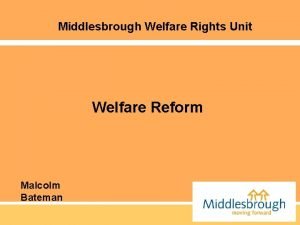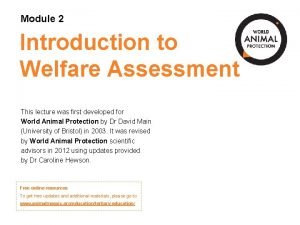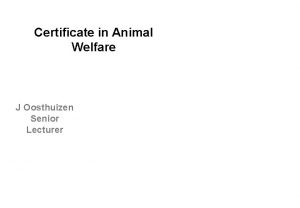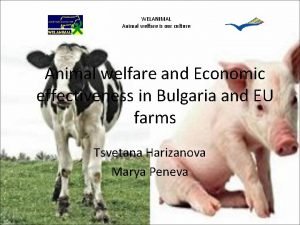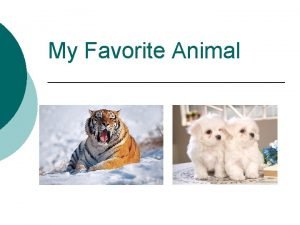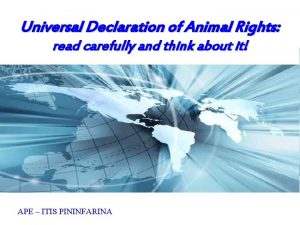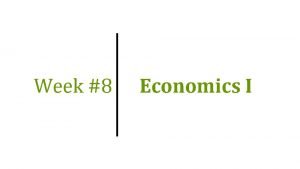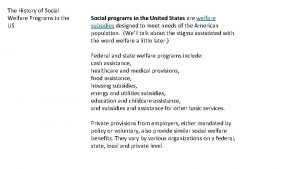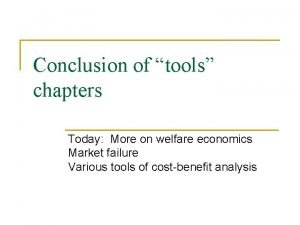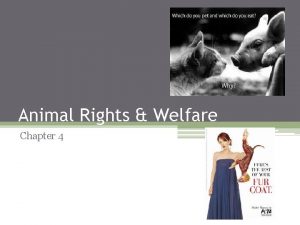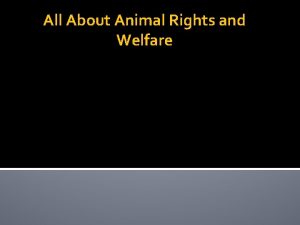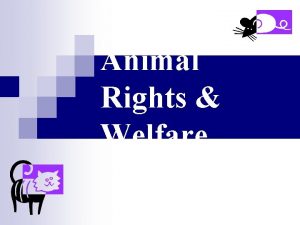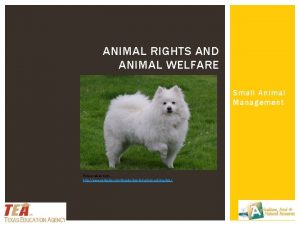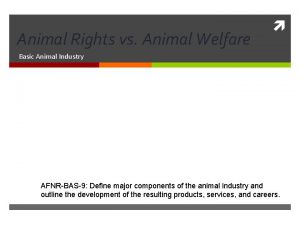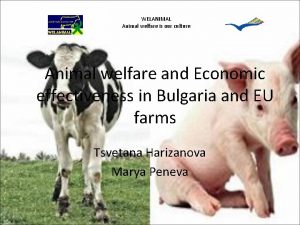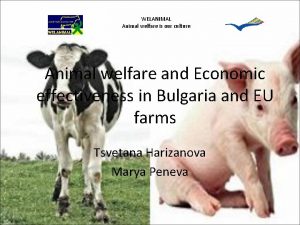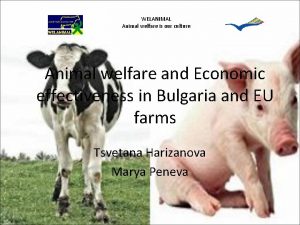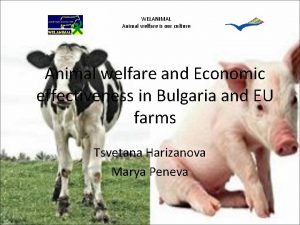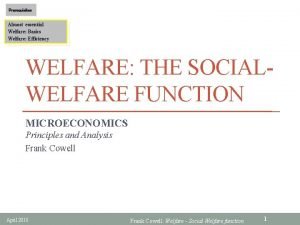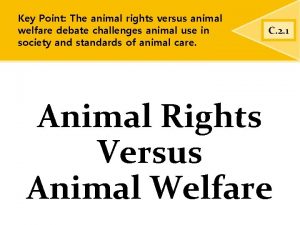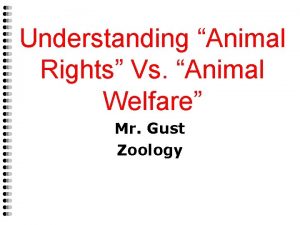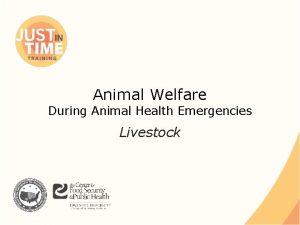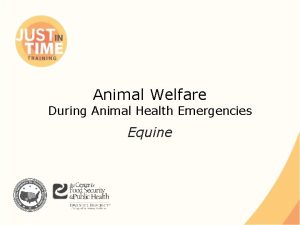Animal Rights vs Animal Welfare SMANMGMT Spring 2011





























- Slides: 29

Animal Rights vs. Animal Welfare SMANMGMT Spring 2011 Ms. Taft

Objectives: Define terms associated with animal rights. Compare “animal rights” & “animal welfare” Identify important people in the animal rights movement.

Objectives (cont. ): Discuss acts of legislation associated with animal welfare. Compare the issues concerning animal rights and animal welfare.

1. Define the following terms: Confinement Systems- animals are confined to cages or pens in partially enclosed or totally enclosed buildings so that production improves

Factory Farming practice of raising thousands of animals @ one time in confined settings (i. e. chickens in cages, veal calves)

Humanize to believe that animals have the same rights as humans and to treat them as humans

Ecoterrorism or crimes committed under the disguise of saving nature

Intensive Operations operations where producer tries to increase production output through better breeding, feeding, and management

specieism belief that any use of animals by humans reflects a bias or that humans are superior to animals

vivisection research consisting of surgical operations and experiments to study the structure and functions of organs

unethical belief that something is going against one’s moral principles or values

Animal Rights & Welfare Vocabulary Domestic Animal one which has been tamed and kept as a pet Research Animal animal used for scientific research which cannot be done on humans Wild Animal undomesticated animal which lives in the wild Endangered Species animals at risk of extinction Production Animal raised for purposes such as work or food manufacturing Marine Animal one which inhabits the water Moratorium suspension of activity Burro small donkey, usually used as a pack animal

2. Compare “Animal Rights” & “Animal Welfare” Animal Welfare is the position that animals should be treated humanely. This includes proper housing, nutrition, disease prevention & treatment, responsible care, handling & humane euthanasia or slaughter.

2. “Animal Welfare” (cont. ) Animal welfare people believe that animals can be used for human purposes, but that they should be treated so that discomfort is kept to a minimum.

2. “Animal Rights” Animal rights is the position that animals should not be exploited. Animal rights people believe that animals should not be used for food, clothing, entertainment, medical research, or product testing.

2. “Animal Rights” (cont. ) This also includes the use of animals in rodeos, zoos, circuses, & even as pets. They believe it is ethically, morally, & inherently wrong to use animals for humane purposes under any condition.

3. Identify Important People: Ruth Harrison - published a book in 1964 entitled Animal Machines: The New Factory Farming Industry.

3. Ruth Harrison (cont. ) The main emphasis of the book centered on 2 areas: the use of antibiotics, hormones & additives in animal feeds & modern factory farming.

3. Important People (cont. ) Peter Singer – published Animal Liberation in the latter 1970’s. He is considered the founder of the modern animal rights movement.

3. Peter Singer (cont. ) His publication condemned the use of animals produced for food & their use in research.

4. Acts of Legislation & Organizations Concerned with Animal Welfare The 1 st anti-cruelty law was passed by the New York Legislature in 1828. In 1866, the American Society for the Prevention of Cruelty to Animals (ASPCA) was formed in New York.

4. ASPCA continued: This organization was formed to look after the welfare of disabled horses & mules and save them from abandonment. This was America’s 1 st humane society & was founded by Henry Bergh.

4. Acts/Organizations (cont. ) In 1906, the Animal Transportation Act was passed to protect animals traveling long distances by rail. Also, it was passed to provide humane care & treatment of animals destined for slaughter.

4. Acts/Organizations (cont. ) In 1958, the Humane Slaughter Act was passed. This act also included the humane handling of animals prior to and during slaughter.

4. Acts/Organizations (cont. ) In 1966, Congress enacted Public Law 89 -544, known as the Laboratory Animal Welfare Act (AWA).

4. Public Law 89 -544 (cont. ) This law regulated dealers who handled dogs & cats, as well as laboratories that use dogs, cats, hamsters, guinea pigs, rabbits & primates in research.

4. Acts/Organizations (cont. ) The Horse Protection Act protects & regulates the horse show business.

5. Compare issues concerning “animal rights” & “animal welfare”… Answer & discuss the following questions in a 30 minute writing assignment. The length of the assignment should be no less than ½ - ¾ of a page.

5. Writing Assignment… Should animals be used for food? Why or why not? Should animals be used in experiments? Should animals be hunted for food/sport? Should animals be kept as pet?
 Venn diagram animal and plant cells
Venn diagram animal and plant cells Animal rights vs animal welfare
Animal rights vs animal welfare Venn diagram plant and animal cell
Venn diagram plant and animal cell Welfare rights neath
Welfare rights neath Welfare rights middlesbrough
Welfare rights middlesbrough Welfare rights salford
Welfare rights salford Ecisd spring break 2011
Ecisd spring break 2011 Seasons and months
Seasons and months Kim ki duk summer fall winter spring
Kim ki duk summer fall winter spring Legal rights and moral rights
Legal rights and moral rights Positive rights and negative rights
Positive rights and negative rights Positive and negative rights
Positive and negative rights Littoral right
Littoral right Rosalind hursthouse
Rosalind hursthouse Negative right
Negative right Conclusion of rights
Conclusion of rights Positive rights and negative rights
Positive rights and negative rights The 5 freedoms animal welfare
The 5 freedoms animal welfare Higher certificate in animal welfare
Higher certificate in animal welfare Animal welfare bulgaria
Animal welfare bulgaria Favorite animal ideas
Favorite animal ideas Aristotle animal rights
Aristotle animal rights The universal declaration of animal rights
The universal declaration of animal rights Monopoly deadweight loss
Monopoly deadweight loss Social programs in the us
Social programs in the us Acs dobfar welfare
Acs dobfar welfare Initiatated
Initiatated Conclusion of welfare economics
Conclusion of welfare economics Voucher in auditing
Voucher in auditing National agencies related to child welfare
National agencies related to child welfare




